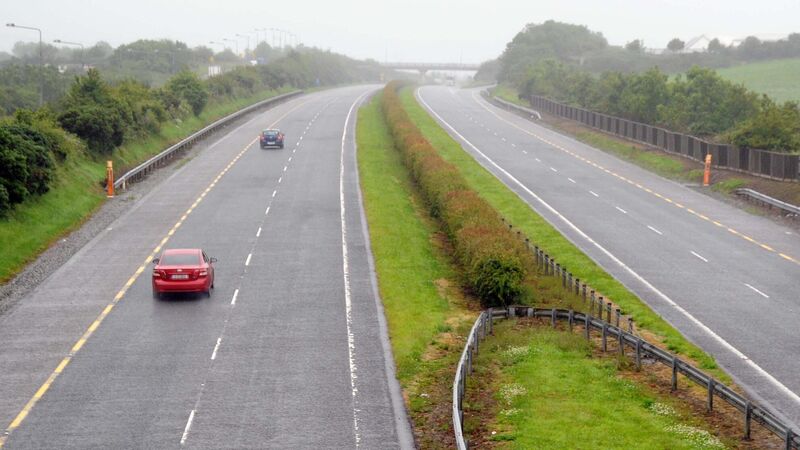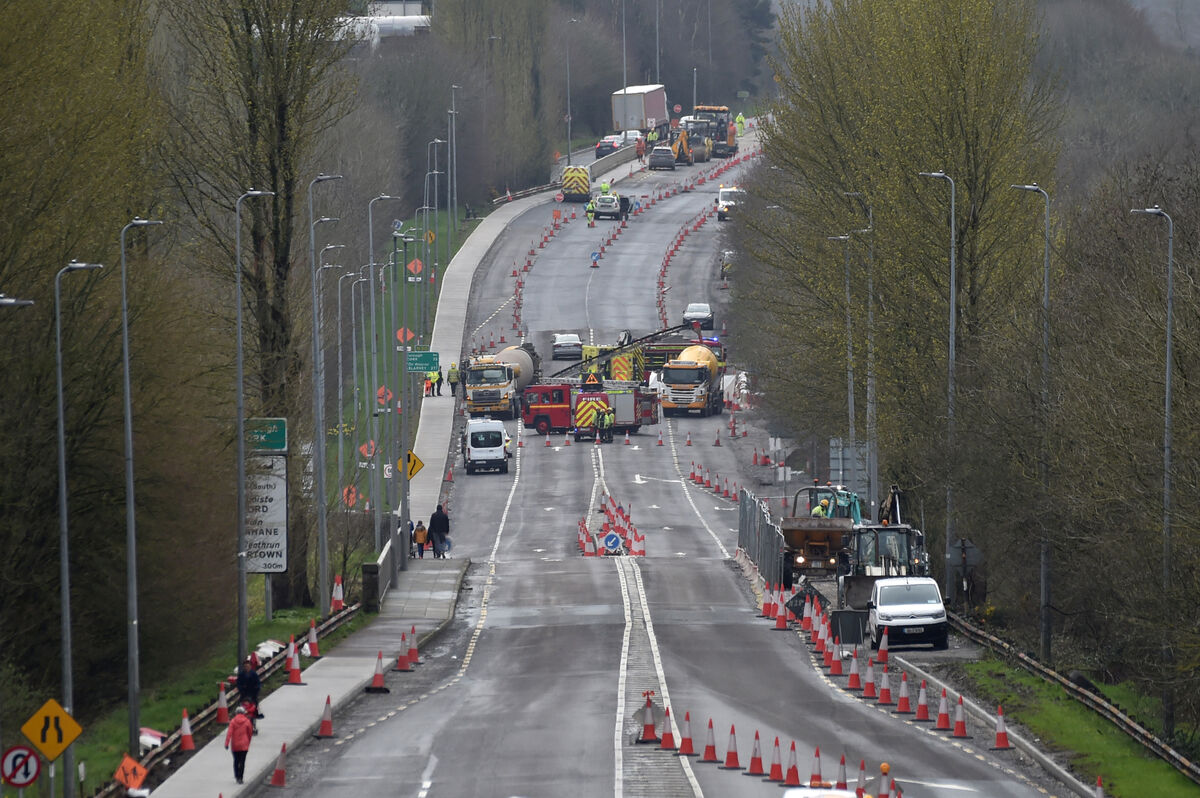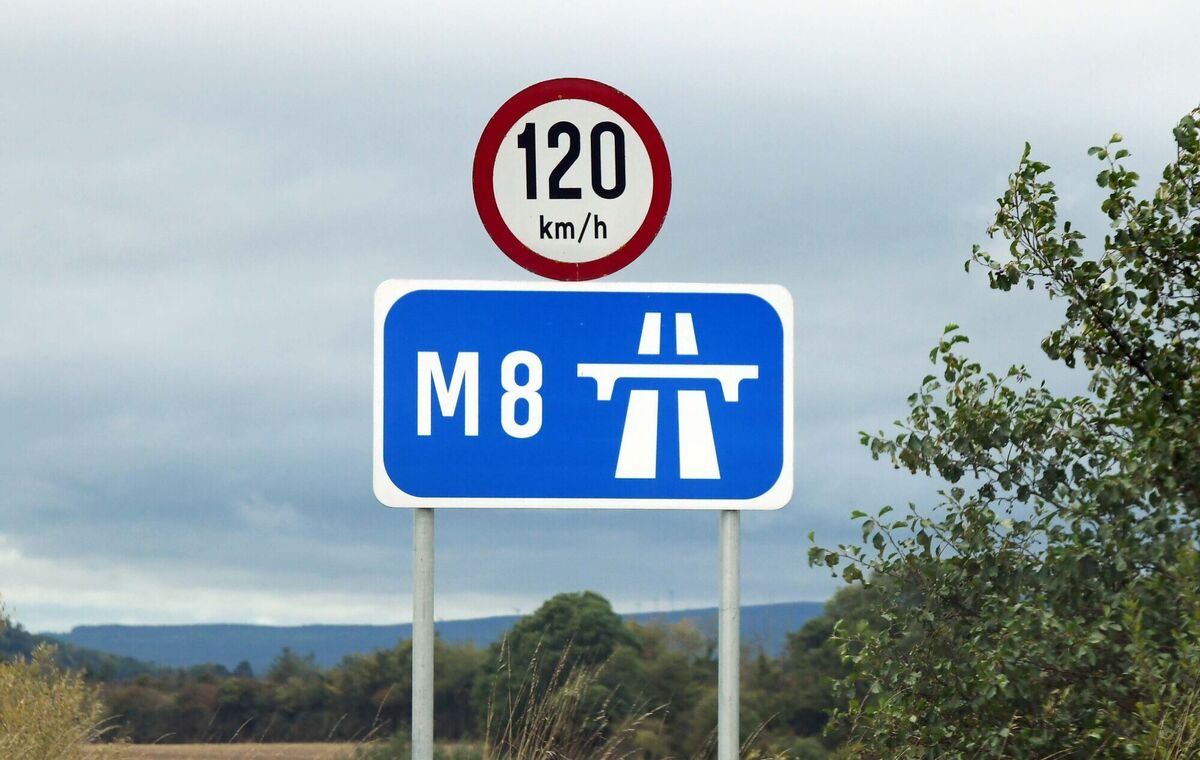Cork-Limerick motorway may be pushed into the slow lane again

One group is proposing that the solution to the lack of progress on the N/M20 could be found in the shape of the M8 motorway. See below. Picture: Denis Minihane
When the National Development Plan (NDP) was launched in Páirc Uí Chaoimh a few weeks ago, there were flurries of press releases from TDs across the country.
Representatives from government parties held up the inclusion of different projects as proof positive that the coalition is committed to their region, while opposition (and an occasional backbench) TDs railed at omissions.
For those who have watched and waited for a motorway linking Cork and Limerick, however, the inclusion of the M/N20 scheme was met with a sense of "we'll believe it when we see it".
With the need for an improvement of the road from Cork to Limerick first mooted in 1998, the people of both cities — and the towns gridlocked by traffic between the two — have waited with bated breath.
That report says that the substantive work on the entire route would be complete by around 2014. Four years after that deadline had passed, a full motorway was committed to by the Ireland 2040 national development plan, which said that a €900m stretch of road would be completed by 2027.
Its rationale for the road was simple: "Cork and Limerick are Ireland’s second and third largest cities located in the southwest and mid-west respectively. The two cities are approximately 100km apart yet at present the economic interaction and interrelationships between the cities is limited with poor transport connectivity being a factor.
"The solution for the M20 corridor will be identified through the appraisal process by the development of a business case for the scheme."
On the first anniversary of the release of that document, then Taoiseach Leo Varadkar hailed a major milestone — the scheme's technical advisers were appointed and it was all go.
However, the impact of the pandemic, coupled with questions about the environmental and local impact of a full motorway have seen the road's status as a full motorway become somewhat unclear, with the newest NDP referring to it as the N/M20.

Anyone who has driven from Dublin to Limerick will have done so on a motorway from Naas to the outskirts of the city. For those travelling from Cork to Limerick, it is less comfortable, less quick and, most crucially, less safe.
In May of this year, figures released by the N/M20 Project office showed that the proportion of fatal collisions to all personal injury collisions on the N20 is four times higher than the national average. In addition, the rate of collisions on the N20 is substantially higher than average, meaning drivers are more likely to be involved in a personal injury collision on the N20 than on other national roads in the country and those who are are more likely to die.
In total. there were 87 collisions causing injury along the entire N20 route in the years 2016-2018. Of those. seven collisions were fatal (8%), 13 resulted in Serious Injury (15%), and the remaining 67 resulted in Minor Injury (77%). A high percentage of collisions (63%) occurred along rural sections of the N20, which is significantly different from the national average (39%).
While the project will only be around 100km of road or rail, it is a complicated process which would bypass a number of towns, cut through land and will cost a lot of money.
One of the main issues with the current road is that it has so many access points. This means that farms, businesses, and homes are dotted all along the route and upgrading the existing road would mean having to cater for all of them.
Which is to say nothing of local objections. While the project is largely favoured by those at either end of the proposal, those in the middle feel differently.
There are four proposed routes on the table and each comes with a challenge and at least some degree of local opposition.
There is also some worry about the potential cost. That €900m figure in Ireland 2040 is now more than tripled according to Transport Minister Eamon Ryan. Speaking ahead of this year's NDP launch, he said no decision had been made on how to proceed.
“We are looking at all options and that is why we are not ruling out any, because it is safety first. But we have to be careful because if we went to full motorway status, it could be about €3bn.
“Safety first, compact development first, low-carbon development first. The exact best way of doing it, Transport Infrastructure Ireland (TII) are going to come back with the recommendations in that regard,” he said.
Taoiseach Mícheál Martin told Fianna Fáil TDs that Mr Ryan “does not like big roads” and reluctantly accepted a number of bypasses in the NDP, showing the political considerations at play in the coalition.
Obviously, on an engineering and final level, there is a difference between a full motorway and a road that mixes different road types.
However, the difference would also be in journey times, with proponents of the motorway saying that it would enable a link between Limerick and the Port of Cork.

The Cork Limerick Alliance Group has suggested that the M8 could be the answer.
They group has argued that the entire project can be achieved far more cheaply, supporting the views of Tipperary and Waterford county councils to build a motorway between Waterford and Limerick (M24), which would connect to the M8 (Cork-Dublin motorway) at Cahir, Co Tipperary.
The group says that this route would be nine minutes longer than a motorway between the two cities directly and would be significantly cheaper. The savings, the group has said, would be used to deliver bypasses of Buttevant and Charleville.
As of now, the project is at what is called Option Selection Phase. That will see the preferred options for a road and a rail link laid out and one decided on. Spokespersons for the three councils involved in the project — Cork City Council, Cork County Council, and Limerick City and County Council — said that this process will finish in the first quarter of next year.
"The N/M20 Cork to Limerick project team are committed to providing the optimal transport solution for improving connectivity between the cities of Cork and Limerick, and ultimately Galway. If a road-based option is identified as part of the preferred option, the road cross-section (i.e. Single Carriageway, Dual Carriageway or Motorway) and road classification (i.e. Motorway Scheme or Protected Road Scheme) will be considered and established by the project team in the subsequent planning and design phase."
The councils are also agreed that the road has to be delivered.
"The overwhelming need for the N/M20 Cork to Limerick Project has been established with the extensive studies and surveys undertaken. The capital investment in improving the existing N20 road between Cork and Limerick has been limited over the last two decades, in anticipation of the major capital investment on the Cork to Limerick Project.
"The need for the N/M20 Cork to Limerick Project is clear in respect of improving: road safety; public and private transport efficiencies; public realm in bypassed towns and villages along the N20; active travel infrastructure; along with the national, regional, and local economic benefits from improving connectivity between the second and third largest cities in Ireland."
However, with the project at phase 2 of a seven-phase process, no mention is made of when the first shovels will be in the ground, meaning that the people of Cork and Limerick will continue to wait and see.
















